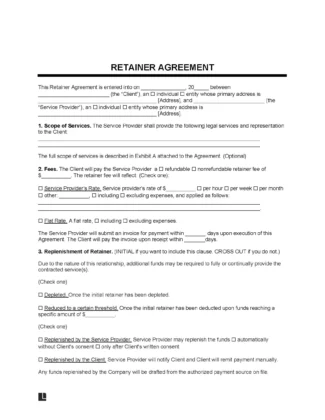
Create a contract with our Retainer Agreement for clients and professionals who require upfront payment for future work.

Published September 25, 2023
Written by Ioana Gagiuc | Reviewed by Brooke Davis
A retainer agreement is a helpful way to establish the terms of a contract when hiring someone for long-term work or professional assistance. This type of agreement ensures that the worker is on retainer for their services and clearly outlines the working relationship between the client and service provider.
Unlike typical employment contracts, the client pays an advance retainer for the services they’ll receive, which acts as a down payment for future work specified in the agreement. This fee can be used to secure the services of a professional for a specific project or time period or for an indefinite amount of time.
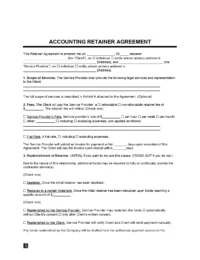
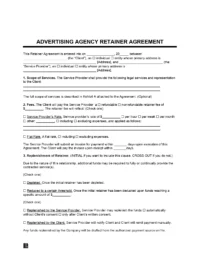

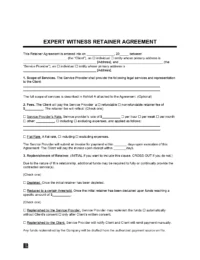
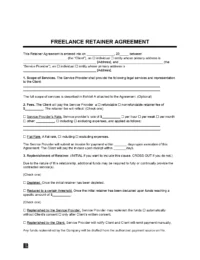
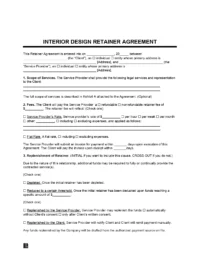
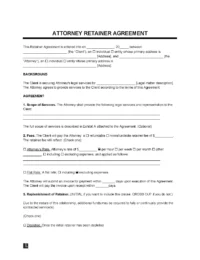
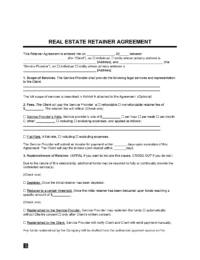
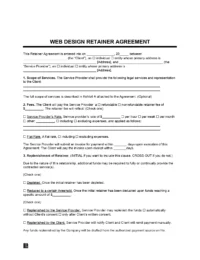
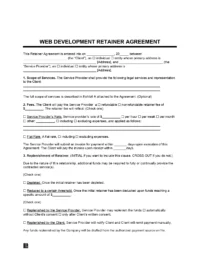
Retainer agreements are a type of service agreement . Terms vary depending on the types of services offered and the payment method. The three primary types of retainer include:
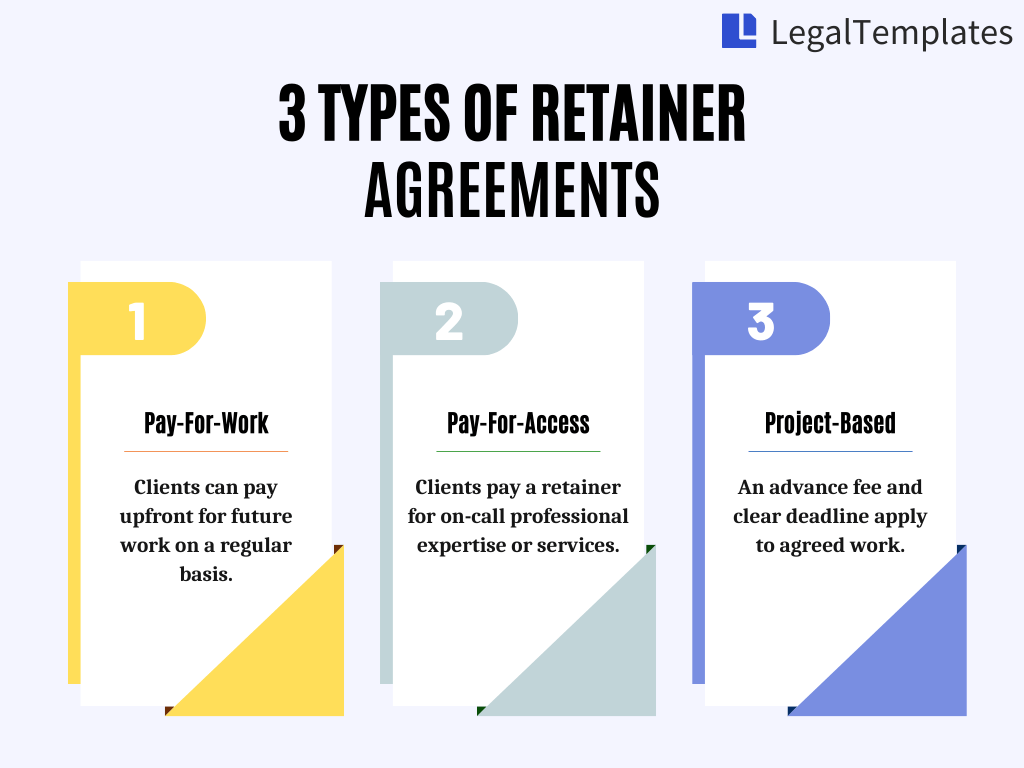
Pay-for-work retainer agreements are for a client who pays the worker upfront for actual work to be performed in the future, typically on an ongoing basis. Fees for work may be submitted once for short-term contracts or periodically, such as a monthly or weekly payment, for ongoing services.
With a pay-for-access retainer, the client pays the service provider to access their professional expertise or services as needed. An example would be a financial consultant who remains available on call for a client in exchange for a monthly retainer.
Project-based retainer agreements allow the client to pay an advance fee for a one-time project. This retainer typically applies to projects with a set scope of work and a clear deadline.
Retainer fees are calculated and assessed differently based on the type of agreement and services provided. Standard retainer fees include the following:
An hourly retainer is calculated based on the expected number of hours multiplied by the worker’s hourly rate. An example of an hourly retainer is an attorney who charges a retainer for three hours of work to write a legal letter on behalf of a client.
A professional may charge a flat fee for the full scope of their services for a specific project or period. Such fees are standard with professionals, such as web designers, with a clear scope of work and a deadline for the final product.
Often seen in legal representation, contingency retainer fees are not paid upfront. Instead, the attorney retains an agreed percentage of the final settlement or earnings only if the case is successful.
Hybrid retainer fee arrangements are any combination of hourly, flat, and contingency fees. An example of a hybrid arrangement is when an attorney takes a legal case with a lower hourly retainer and a percentage of the final financial recovery.
While the terms of a retainer agreement will differ depending on the scope of work and services offered, most retainer agreements follow the same general structure:
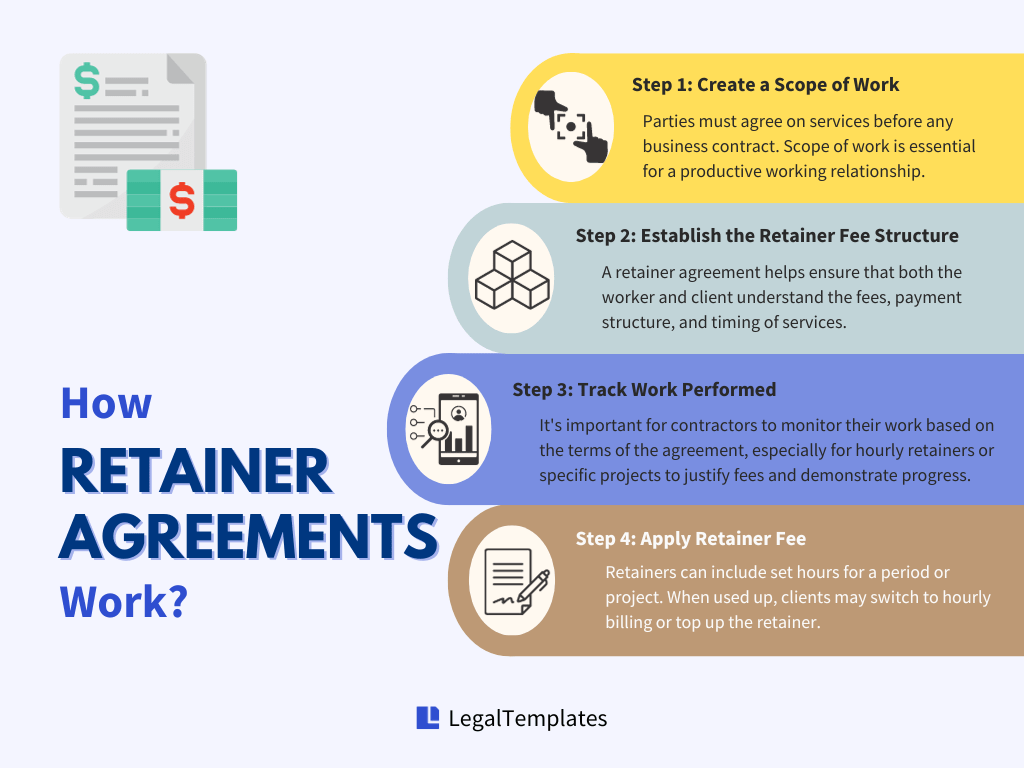
The first step of any business contract is agreeing to the services the worker will provide to the client. The scope of work can vary widely depending on the services offered. Law firms often use retainer agreements to establish a client-attorney relationship. Accountants, consultants, and freelancers may also use retainer agreements instead of a standard employment contract , freelance contract , or independent contractor agreement . A clear scope of work is crucial to ensure a successful working relationship.
You will use the retainer agreement to delineate the types of fees, payment structure, and timing. This ensures a stable understanding in which the worker knows how much they will receive for their services, and the client can budget accordingly.
Once the agreement is in effect, the contractor tracks their work per the contract terms. This is particularly important for hourly retainer agreements, but even project-based contracts benefit from monitoring to substantiate their fees and show how the project is progressing.
Retainers often cover a certain number of hours per period or per project. The contractor tracks hours worked and applies them to the retainer. For example, an attorney accepts a retainer of $1,500 for ongoing services.
Once they use up $1,500 at their hourly rate, they may enter an hourly agreement to invoice for additional work performed. Alternatively, they may request retainer replenishment for continued access to their services.
Retainer agreements offer many advantages for both clients and service providers:
| For Client | For Service Provider |
|---|---|
| Reduced recruitment and onboarding costs | Stable income for long-term contracts |
| Higher quality work | Reduced marketing and sales to find new clients |
| Access to established professionals in specialized fields | Better long-term client-provider relationships |
| Predictable expenditures for easier budgeting | Reduce payment risks |
The specific details of your retainer agreement will differ based on the services provided. However, most retainer agreements should include the following information:
You may include additional pages further to define the scope of work or payment arrangements. For instance, a schedule defining invoicing deadlines or payment schedules could provide important context for the agreement.
To create a new retainer agreement, start with a fillable template in Word or PDF format. A quality template will help you remember critical details to avoid legal trouble later. Follow these steps to complete your retainer agreement template:
Enter the name of the client and the service provider. This section should include the names of the companies entering the agreement and the names and titles of representatives signing the contract.
Explain the types of services to be offered, including service limitations, if necessary. A clear scope of work is crucial for avoiding miscommunication or legal issues. To ensure clarity, you may attach additional pages to include the full range of services.
To avoid missing important details, consider creating a letter of intent with information about the scope of services before beginning the final retainer agreement.
Enter the retainer fee amount and whether hourly, weekly, monthly, project-based, or otherwise calculated. Detail how service fees will be calculated in relation to the retainer and how often payment is rendered. You may also enter details about invoicing frequency and invoice payment terms.
Include instructions for the next steps if the retainer runs out. The client may:
You may arrange for the service provider to automatically withdraw the retainer periodically upon reaching a threshold or upon depletion. Indicate whether automatic replenishment by the service provider should be with or without the client’s written consent.
Alternatively, have the service provider notify the client when payment is due so they can submit their retainer payment manually.
The term of a retainer agreement may include a specific start and date or be indefinite. Indicate the agreement start date, and then note whether termination will occur:
If your contract is at-will, indicate the agreed notice period for contract termination or note that either party can terminate the agreement without prior notice.
Confidentiality requirements differ by industry. Generally, a confidentiality clause states that the service provider will maintain the client’s confidentiality, and the client will retain legal rights to the products and intellectual property created on their behalf by the service provider.
Indicate whether the client’s information should be returned or safely disposed of upon termination of the agreement.
Because a retainer agreement is legally binding, it is critical to address legal concerns that may arise. Legal terms you should incorporate into your retainer agreement include the following:
All parties to the contract must sign for the retainer agreement to be valid. Print the names of the company representatives and their titles, and then have each party sign.
Start your contracting process with this fillable retainer agreement sample, available in PDF and Word formats:
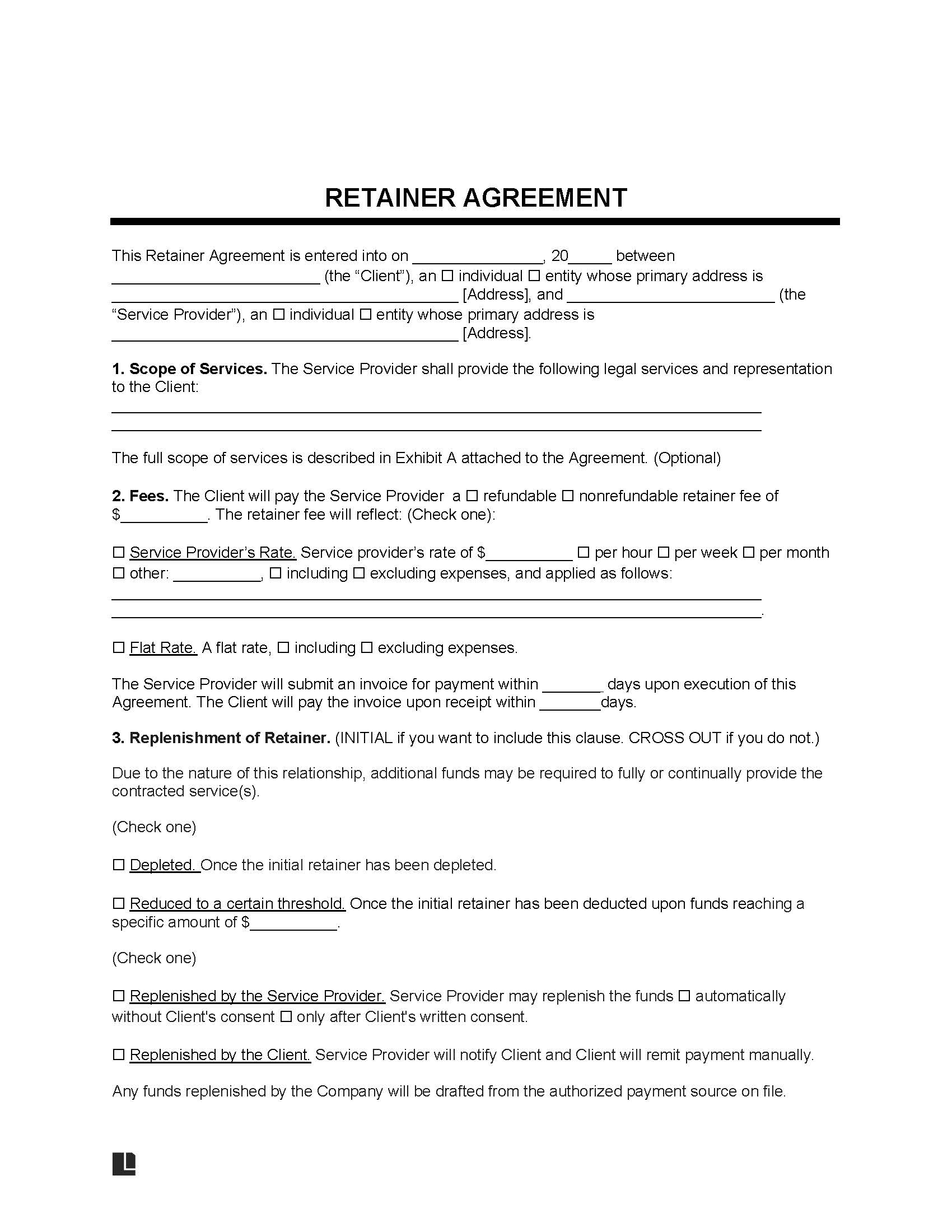
A retainer agreement aims to provide a stable long-term contract that fosters a healthy business relationship between a service provider and their client. Follow these tips to secure more long-term clients for your business:
When services in a retainer agreement are unclear, it can lead to misunderstandings and loss of business relationships. To avoid these complications, be sure to define the services clearly.
You can also indicate which services are not included or add a pricing schedule for additional services clients often request.
Keep an eye on industry pricing and ensure your services are priced competitively. This does not mean you should always offer the lowest prices. Instead, be sure that your services are clearly listed and priced competitively for apples-to-apples comparisons with other service providers.
Good relationships are the key to success for a long-term contract. Be polite and authentic, and treat your clients with respect and dignity. Ensure quality products and services, and always be helpful so the client knows you have their back.
Flexibility is crucial when establishing a working relationship with a new client. Change is unavoidable in any business. You and your client benefit from an agreement structure that can adjust to inevitable changes.
Keep your client informed and up to date on the progress of your services. Whether you are an attorney working on a case or a writer creating a blog, your client will have more confidence and trust in your abilities if they know what you are doing with the retainer they paid.
The purpose of a retainer agreement is to provide legal documentation of a contract between a client and a service provider. It provides a basis for the service provider to receive payment in advance for professional services.
A monthly retainer agreement is a long-term project contract between a service provider and their client. The contractor provides professional services for a monthly fee for the project’s duration.
You can cancel a retainer agreement, but the terms for cancellation depend on the termination terms and laws governing your contract agreement. For example, you may be required to give notice or return a portion of the retainer fee upon termination of the agreement.
You should charge your hourly rate multiplied by the hours you expect to work on the project or services outlined in the agreement. Be sure to include taxes, fees, and expenses associated with your services.
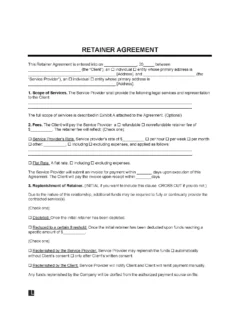
Create a Retainer Agreement here!